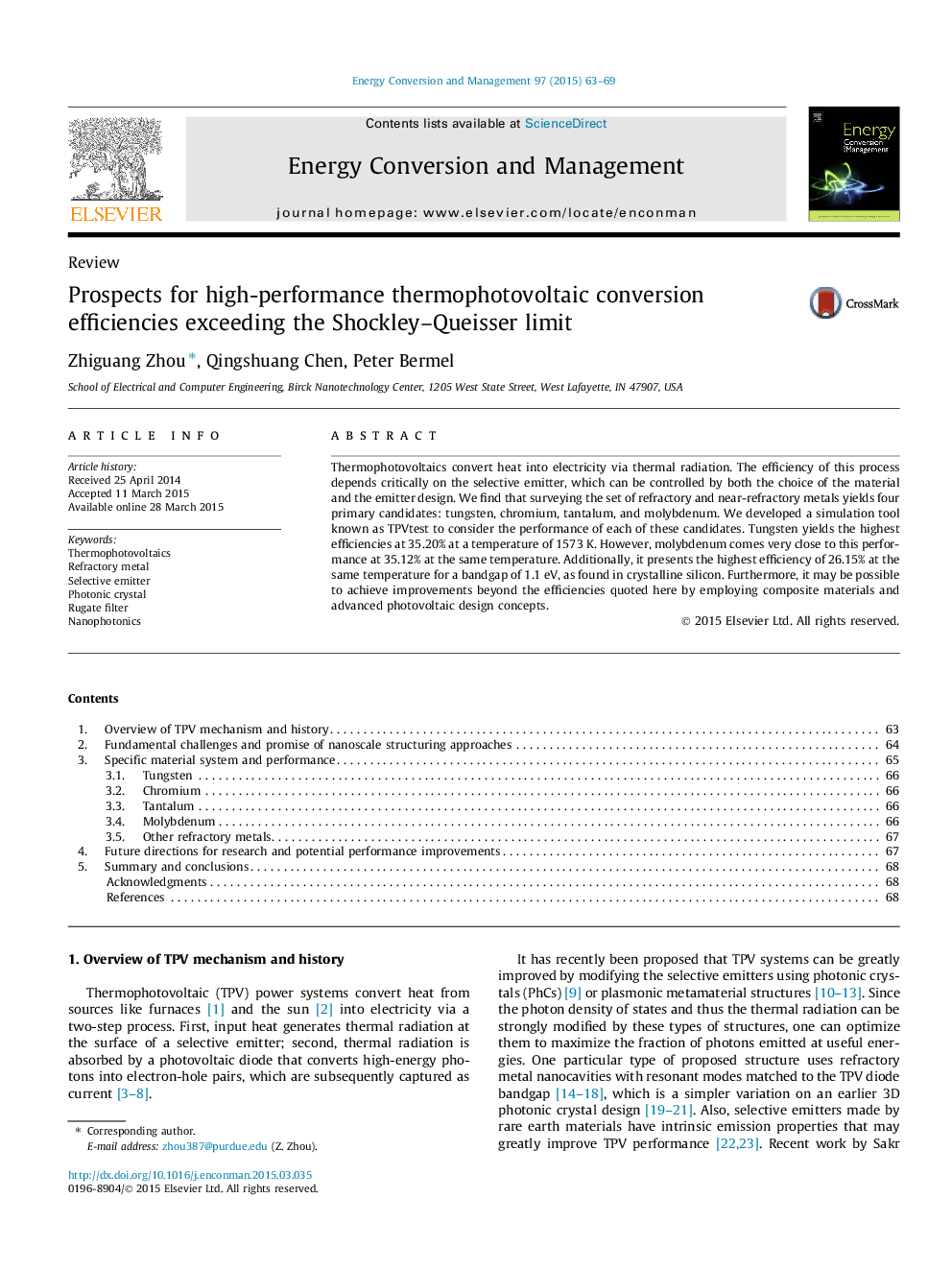| Article ID | Journal | Published Year | Pages | File Type |
|---|---|---|---|---|
| 760588 | Energy Conversion and Management | 2015 | 7 Pages |
•Thermophotovoltaics (TPV) can use a selective emitter to efficiently convert heat to electricity.•Strong candidates for selective emitter materials include tungsten and molybdenum.•Both emitter materials may exceed the Shockley–Queisser limit under ideal circumstances.
Thermophotovoltaics convert heat into electricity via thermal radiation. The efficiency of this process depends critically on the selective emitter, which can be controlled by both the choice of the material and the emitter design. We find that surveying the set of refractory and near-refractory metals yields four primary candidates: tungsten, chromium, tantalum, and molybdenum. We developed a simulation tool known as TPVtest to consider the performance of each of these candidates. Tungsten yields the highest efficiencies at 35.20% at a temperature of 1573 K. However, molybdenum comes very close to this performance at 35.12% at the same temperature. Additionally, it presents the highest efficiency of 26.15% at the same temperature for a bandgap of 1.1 eV, as found in crystalline silicon. Furthermore, it may be possible to achieve improvements beyond the efficiencies quoted here by employing composite materials and advanced photovoltaic design concepts.
Graphical abstractFigure optionsDownload full-size imageDownload as PowerPoint slide
